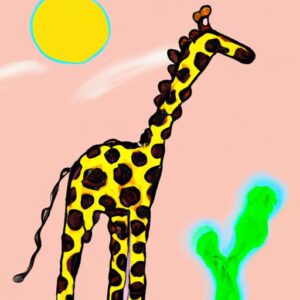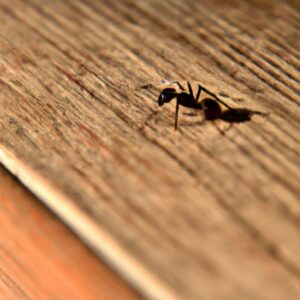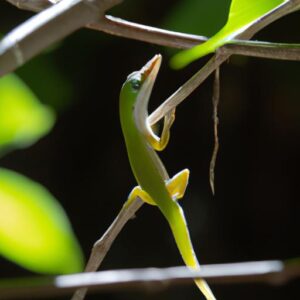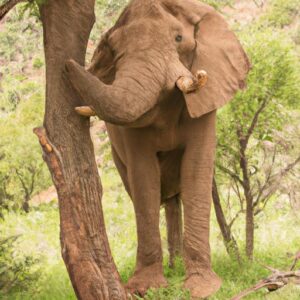Introduction
Ants, with their industrious nature and intricate social structures, are fascinating insects that play a crucial role in maintaining ecological balance. However, have you ever wondered who preys on these tiny creatures? Understanding ant predators is not only a captivating aspect of the natural world but also holds significant importance in the dynamics of various ecosystems. By delving into the realm of ant predators, we uncover a world of specialized hunters and unique adaptations that highlight the intricate web of life. Join me on this exploration as we unveil the secrets of nature’s ant predators.
Anteaters
Description of Anteaters
Anteaters, with their long snouts and tongues, are specialized mammals known for their unique feeding habits. These creatures belong to the suborder Vermilingua and are primarily found in Central and South America. Their slender bodies and sharp claws are well-suited for their diet, which consists mainly of ants and termites.
Diet and Feeding Habits
Anteaters are exclusively insectivorous, relying on ants and termites as their primary food source. Their elongated snouts and tongues, which can extend up to two feet, enable them to reach deep into ant colonies and termite mounds to extract their prey. Anteaters have a remarkable ability to consume thousands of insects in a single day, making them efficient predators in the realm of ant-eating animals.
Adaptations for Eating Ants
To aid in their specialized diet, anteaters have evolved unique adaptations that enhance their hunting and feeding capabilities. Their strong claws are ideal for tearing open ant nests, while their sticky tongues are perfectly designed to collect large quantities of ants with each swipe. These adaptations showcase the remarkable evolutionary journey of anteaters as efficient ant predators in their natural habitats.
Role in Controlling Ant Populations
Anteaters play a vital role in regulating ant populations within their ecosystems. By feeding on large numbers of ants, they help maintain a balance in insect populations and prevent excessive damage caused by unchecked ant colonies. Their presence serves as a natural form of pest control, contributing to the overall ecological harmony of their habitats.
Ant Predators in the Animal Kingdom
Overview of Various Animals that Eat Ants
Ants, despite their small size, have numerous predators across the animal kingdom. From birds to mammals, insects to reptiles, a diverse range of creatures considers ants a delectable treat. These predators have developed specialized hunting techniques to capture and feast on these resilient insects, showcasing the intricate balance of nature’s food chain.
Different Methods Used by Animals to Catch and Eat Ants
Each predator has its unique strategy for hunting and consuming ants. Some use stealth and patience to ambush ant colonies, while others rely on speed and agility to snatch individual ants. Certain predators, like anteaters, have evolved specific adaptations, such as long tongues and powerful claws, to efficiently extract ants from their intricate nests. Understanding these varied methods sheds light on the complex interactions between predators and their ant prey.
Examples of Animals that Rely on Ants as a Primary Food Source
For some animals, ants serve as a primary source of nutrition, forming a significant part of their diet. Species like the aardvark and the pangolin heavily depend on ants for sustenance, showcasing the vital role these insects play in the survival of various wildlife. By examining these examples, we gain insight into the interconnected relationships that shape the natural world and highlight the importance of ants in sustaining diverse ecosystems.
Birds
Bird Species that Feed on Ants
Birds, with their diverse and specialized diets, encompass a variety of species that actively prey on ants. From the agile woodpeckers to the elegant swallows, numerous avian predators have developed a taste for these tiny insects. Some notable bird species known for their affinity towards ants include the nuthatches, thrushes, and even certain species of sparrows. These birds exhibit unique foraging techniques and hunting strategies to capture their ant prey.
How Birds Find and Consume Ants
Birds employ a range of sensory cues and behaviors to locate and consume ants effectively. Their keen eyesight allows them to spot ant colonies from a distance, while their sharp beaks and agile movements aid in capturing individual ants. Some bird species, such as the antbirds in tropical regions, engage in cooperative foraging to flush out ants from their hiding spots. By utilizing a combination of visual, auditory, and tactile cues, birds showcase their prowess as skilled ant predators.
Importance of Ants in the Diet of Certain Bird Species
Ants serve as a vital component of the diet for many bird species, providing essential nutrients and energy for their survival. The high protein content of ants makes them a valuable food source, especially during breeding seasons when birds require additional resources. Certain bird species, like the endangered red-cockaded woodpeckers, heavily rely on ants as a staple food item. The interdependence between birds and ants underscores the intricate relationships within ecosystems, emphasizing the significance of these tiny insects in the avian world.
Insects
Insect Predators of Ants
In the intricate world of insects, there exist specialized predators that have evolved to target ants as their primary food source. These insect predators come in various forms, from beetles to spiders, showcasing a diverse array of hunting strategies and adaptations that make them formidable ant hunters.
Strategies Used by Insects to Capture and Consume Ants
Insects employ a wide range of strategies to capture and consume ants, depending on their species and environmental niche. Some insects, like certain beetles, possess specialized mouthparts or venom that immobilizes ants, while others, such as ants themselves, engage in mimicry to infiltrate ant colonies and prey on unsuspecting individuals. These intricate strategies highlight the evolutionary arms race between insects and ants, shaping the dynamics of predator-prey interactions in the natural world.
Impact of Insect Predation on Ant Populations
The predation pressure exerted by insects on ant populations can have significant ecological implications. Insects that feed on ants help regulate ant populations, preventing unchecked growth that could disrupt local ecosystems. Additionally, the presence of insect predators can influence ant behavior, leading to changes in foraging patterns and colony dynamics. Understanding the impact of insect predation on ant populations provides valuable insights into the delicate balance of nature and the interconnectedness of species within ecosystems.
Conclusion
As we conclude our journey into the realm of ant predators, one thing becomes clear – nature is a masterful tapestry of interconnected relationships. From the specialized adaptations of anteaters to the nimble hunting techniques of birds and insects, the diversity of ant predators showcases the intricacies of the natural world. By understanding the role of ant predators, we gain a deeper appreciation for the delicate balance that exists within ecosystems.
In essence, the quest to uncover which animals eat ants not only reveals nature’s fascinating adaptations but also underscores the importance of preserving biodiversity. As we marvel at the wonders of these tiny hunters and their prey, let us remember our role in safeguarding the intricate web of life that surrounds us. Through knowledge and appreciation, we can work towards harmonizing our existence with the diverse array of creatures that call this planet home.





